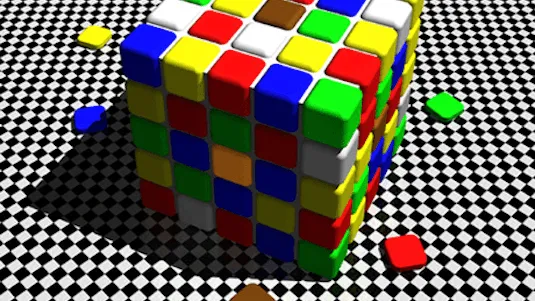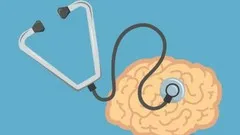
Visual Perception and the Brain 
This course explores the complexities of visual perception and how it relates to the brain. Learners will gain insight into the visual system, the central problem of vision, and the evidence from neuroscience, psychology, and philosophy. Through this course, learners will gain a better understanding of why we see the physical world in a strange way. ▼
ADVERTISEMENT
Course Feature
![]() Cost:
Cost:
Free
![]() Provider:
Provider:
Coursera
![]() Certificate:
Certificate:
Paid Certification
![]() Language:
Language:
English
![]() Start Date:
Start Date:
24th Jul, 2023
Course Overview
❗The content presented here is sourced directly from Coursera platform. For comprehensive course details, including enrollment information, simply click on the 'Go to class' link on our website.
Updated in [March 06th, 2023]
This course introduces learners to the problems that vision faces, using perception as a guide. Learners will explore how what we see is generated by the visual system, what the central problem for vision is, and what visual perception indicates about how the brain works. The evidence for this exploration will be drawn from neuroscience, psychology, the history of vision science and what philosophy has contributed. Although the discussions will be informed by visual system anatomy and physiology, the focus is on perception. The goal of this course is to understand why we see the physical world in a strange way.
[Applications]
The application of this course can be seen in many areas. For example, it can be used to inform the design of visual displays, such as those used in medical imaging, or to understand how to create more effective visualizations of data. It can also be used to inform the design of virtual reality systems, or to understand how to create more effective visualizations of data. Additionally, it can be used to inform the design of educational materials, such as textbooks, to ensure that the visual information is presented in a way that is most effective for learning. Finally, it can be used to inform the design of user interfaces, such as those used in mobile applications, to ensure that the visual information is presented in a way that is most effective for users.
[Career Paths]
1. Cognitive Neuroscientist: Cognitive neuroscientists study the neural basis of cognitive processes such as memory, language, decision-making, and problem-solving. They use a variety of methods, including brain imaging, to understand how the brain works and how it affects behavior. This field is rapidly growing, with new technologies and techniques being developed to better understand the brain and its functions.
2. Visual Psychologist: Visual psychologists study how people perceive and interpret visual information. They use a variety of methods, such as eye-tracking, to understand how the brain processes visual information and how it affects behavior. This field is rapidly growing, with new technologies and techniques being developed to better understand the visual system and its functions.
3. Vision Scientist: Vision scientists study the visual system and its components, such as the eye, the brain, and the environment. They use a variety of methods, such as psychophysics, to understand how the visual system works and how it affects behavior. This field is rapidly growing, with new technologies and techniques being developed to better understand the visual system and its functions.
4. Artificial Intelligence Engineer: Artificial intelligence engineers develop algorithms and systems that can learn from data and make decisions. They use a variety of methods, such as machine learning, to understand how the brain works and how it affects behavior. This field is rapidly growing, with new technologies and techniques being developed to better understand the brain and its functions.
[Education Paths]
1. Neuroscience: Neuroscience is the study of the nervous system, including the brain, spinal cord, and peripheral nerves. It is a rapidly growing field that is becoming increasingly important in understanding the brain and its functions. Neuroscience degree programs typically include courses in anatomy, physiology, biochemistry, pharmacology, and psychology. Students will also learn about the development of the nervous system, the structure and function of neurons, and the mechanisms of neural communication.
2. Psychology: Psychology is the scientific study of the mind and behavior. Psychology degree programs typically include courses in cognitive psychology, social psychology, developmental psychology, and clinical psychology. Students will learn about the biological basis of behavior, the development of personality, and the effects of environment on behavior. They will also gain an understanding of the research methods used in psychology and the ethical considerations involved in conducting research.
3. Cognitive Science: Cognitive science is an interdisciplinary field that combines elements of psychology, computer science, linguistics, philosophy, and neuroscience. Cognitive science degree programs typically include courses in artificial intelligence, cognitive psychology, linguistics, and philosophy. Students will learn about the structure and function of the brain, the development of language, and the principles of artificial intelligence. They will also gain an understanding of the research methods used in cognitive science and the ethical considerations involved in conducting research.
4. Computer Science: Computer science is the study of computers and their applications. Computer science degree programs typically include courses in programming, algorithms, data structures, operating systems, and computer architecture. Students will learn about the design and implementation of computer systems, the principles of software engineering, and the development of computer networks. They will also gain an understanding of the research methods used in computer science and the ethical considerations involved in conducting research.
Pros & Cons

Wealth of knowledge

Inspiring and 'provocative'

Truly amazing

Evokes thinking

Excelente professor

Super straightforward

Well taught

Good list of support resources

None mentioned
Course Provider

Provider Coursera's Stats at AZClass
Visual Perception and the Brain explores the complexities of visual perception and its relationship to the brain. Learners gain an understanding of the problems facing vision and how the visual system produces what they see. They can explore central questions about vision and how visual perception dictates how the brain works. Through this course, learners gain an in-depth understanding of neuroscience, psychology, the history of vision science, and the contributions of philosophy to the field. They can also learn about the anatomy and physiology of the visual system and how it affects their perception of the physical world.
Discussion and Reviews
0.0 (Based on 0 reviews)
Explore Similar Online Courses

Preparing for the AP* Calculus AB and BC Exams

The Civil War and Reconstruction - 1861 - 1865: A New Birth of Freedom

Python for Informatics: Exploring Information

Social Network Analysis

Introduction to Systematic Review and Meta-Analysis

The Analytics Edge

DCO042 - Python For Informatics

Causal Diagrams: Draw Your Assumptions Before Your Conclusions

Whole genome sequencing of bacterial genomes - tools and applications

Control Your Subconscious Mind: Neuroscience Hidden Secrets

Perform an Excellent Neurological Bedside Exam


Start your review of Visual Perception and the Brain